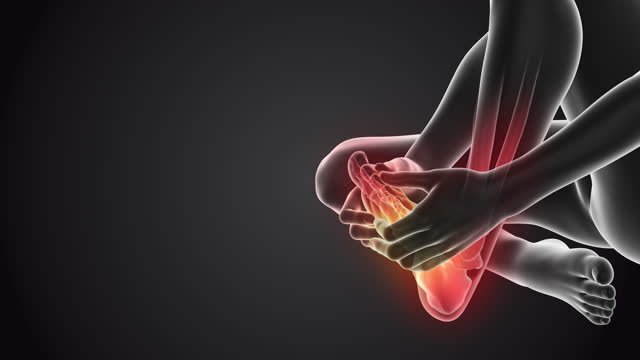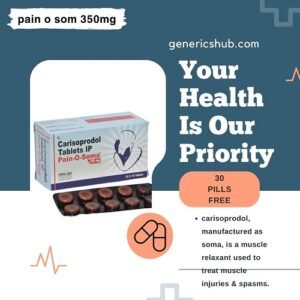The Secrets: The Science Behind Managing Sore Muscles and Joint Pain
In the pursuit of an active lifestyle, sore muscles and joint pain can be formidable adversaries. Whether you’re an athlete pushing your limits, a fitness enthusiast dedicated to your routine, or simply someone experiencing the discomforts of daily life, understanding the science behind managing these issues is crucial for achieving relief and optimizing performance. At [Your Brand], we delve into the depths of this science to provide you with comprehensive insights and effective strategies for managing sore muscles and joint pain.
The Physiology of Sore Muscles and Joint Pain
Muscle Soreness: Exploring the Aftermath of Exercise
Muscle soreness, often referred to as delayed onset muscle soreness (DOMS), is the discomfort experienced after engaging in physical activity, particularly strenuous or unaccustomed exercise. This phenomenon typically manifests within 24 to 72 hours post-exercise and is characterized by localized tenderness, stiffness, and reduced range of motion.
Understanding the Mechanisms: Microscopic Damage and Inflammation
DOMS arises from microscopic damage to muscle fibers and the surrounding connective tissue, primarily caused by eccentric contractions, which involve the lengthening of muscles under tension. This mechanical stress triggers an inflammatory response, with immune cells rushing to the affected area to initiate repair processes. The resulting inflammation contributes to the sensation of pain and discomfort associated with muscle soreness.
Joint Pain: Deciphering the Complexities of Articular Discomfort
Joint pain, or arthralgia, encompasses a spectrum of discomfort affecting the joints, including sensations of stiffness, achiness, and limited mobility. It can stem from various sources, including mechanical stress, inflammation, injury, or underlying conditions such as osteoarthritis or rheumatoid arthritis.
Unraveling the Factors: Cartilage Degradation, Inflammation, and Neuromuscular Dysregulation
In conditions like osteoarthritis, the protective cartilage covering the ends of bones undergoes degeneration, leading to friction, inflammation, and pain within the joint. Inflammatory mediators, such as cytokines and prostaglandins, further exacerbate the discomfort by sensitizing pain receptors and promoting tissue damage. Additionally, neuromuscular dysregulation, characterized by altered sensory feedback and muscle imbalances, can contribute to joint instability and pain.
Strategies for Managing Sore Muscles and Joint Pain
Incorporating Recovery Techniques: Enhancing Repair and Regeneration
1. Active Recovery: Engage in low-intensity activities such as walking, swimming, or yoga to promote blood flow, alleviate stiffness, and facilitate the removal of metabolic byproducts from muscles.
2. Passive Modalities: Utilize modalities such as ice packs, heat therapy, compression garments, and massage to reduce inflammation, relieve pain, and enhance muscle relaxation.
Implementing Nutritional Interventions: Nourishing Muscles and Joints From Within
1. Anti-Inflammatory Foods: Consume a diet rich in fruits, vegetables, fatty fish, nuts, and seeds, which are abundant in antioxidants and omega-3 fatty acids known for their anti-inflammatory properties.
2. Supplementation: Consider supplements such as omega-3 fish oil, turmeric, ginger, collagen peptides, and glucosamine sulfate to support joint health, reduce inflammation, and promote tissue repair.
Prioritizing Proper Hydration and Rest: Replenishing Fluids and Allowing Adequate Recovery
Pain O Soma 500mg is main medicinal advantage is its capacity to efficiently treat musculoskeletal pain. By addressing the underlying muscle tension and spasm, this medicine offers substantial relief from a variety of diseases, including injuries, sprains, strains, and chronic illnesses.
1. Hydration: Maintain optimal hydration levels by drinking water throughout the day, as dehydration can impair muscle function and exacerbate soreness.
2. Sleep: Prioritize quality sleep to facilitate hormonal regulation, tissue repair, and overall recovery, aiming for 7 to 9 hours of uninterrupted rest per night.
Traditional Approaches to Pain Management
Over-the-Counter Medications
One common approach to managing sore muscles and joint pain is through over-the-counter medications. Nonsteroidal anti-inflammatory drugs (NSAIDs) such as ibuprofen and aspirin can help alleviate pain and reduce inflammation. However, it’s essential to use them cautiously and follow recommended dosages to avoid adverse side effects.
Hot and Cold Therapy
Another traditional method for pain relief is hot and cold therapy. Applying heat packs or ice packs to the affected area can help soothe sore muscles and reduce swelling. Alternating between hot and cold treatments can provide both immediate and long-term relief.
Rest and Relaxation
Rest is often overlooked but is crucial for allowing the body to heal and recover from muscle and joint pain. Taking breaks from strenuous activities and allowing sufficient rest time can prevent further aggravation of the condition.
Advanced Techniques for Pain Management
Physical Therapy
For those dealing with chronic or severe muscle and joint pain, physical therapy can be highly beneficial. A trained physical therapist can develop a personalized treatment plan that includes targeted exercises to strengthen muscles, improve flexibility, and alleviate pain. Additionally, techniques such as massage therapy and joint mobilization may be incorporated to enhance mobility and reduce discomfort.
Mind-Body Therapies
Mind-body therapies, such as yoga and meditation, have gained recognition for their effectiveness in managing pain and promoting overall well-being. These practices focus on the connection between the mind and body, helping individuals cultivate mindfulness and relaxation, which can reduce stress and alleviate pain symptoms.
Dietary Supplements
Certain dietary supplements have shown promise in relieving sore muscles and joint pain. Glucosamine and chondroitin are commonly used to support joint health and reduce inflammation. Additionally, omega-3 fatty acids, found in fish oil supplements, have anti-inflammatory properties that can benefit individuals with arthritis and other inflammatory conditions.
Alternative Therapies
Various alternative therapies can complement traditional approaches to pain management. Acupuncture, acupressure, and chiropractic care are examples of alternative treatments that target specific pressure points or spinal adjustments to relieve pain and improve overall well-being.
Conclusion: Empowering You to Conquer Soreness and Enhance Performance
At [Your Brand], we recognize the significance of understanding the science behind managing sore muscles and joint pain. By implementing evidence-based strategies encompassing recovery techniques, nutritional interventions, hydration, and rest, you can proactively address these challenges and unlock your full potential. Say goodbye to discomfort and hello to peak performance with our comprehensive approach to optimizing muscle and joint health.








